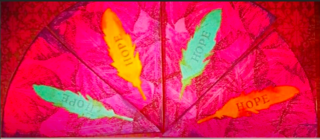Trauma
The MSSS Model of Expressive Arts as Healing Practices
It all comes down to movement, sound, storytelling, and silence.
Posted September 30, 2020 Reviewed by Ekua Hagan

Neuroscience is undoubtedly still an important piece of current investigations of expressive arts to determine best practices. However, the bulk of the neuroscience focus still rests on language and the implicit assumption that human experience resides in the brain. This infers that reparation occurs through the “head” and words. In contrast, for millennia the countless traumatized individuals and groups I have worked with over decades already have identifiable capacities to repair. These are universal approaches found throughout human behavior across all cultures that have yet to be fully acknowledged and integrated into trauma-informed systems of clinical and community practices. I believe that they form as strong a foundation for what we define as “best practices” in addressing traumatic stress in the same way many of the current methods that have been derived from science. To clarify how psychotherapists can apply these approaches, I arrived at a model for clinical practice that places them into four major categories — movement, sound, storytelling, and silence (Malchiodi, 2020).
Although I have identified four distinct categories, there are overlapping functions due to the characteristics of the arts themselves. In using expressive arts to address traumatic stress, these overlapping functions are key to supporting experiences of self-regulation, grounding and anchoring, and interoception (felt sense) of safety.
Rather than yet another blog post to read, I hope you enjoy a more visual explanation via this 10-minute film outlining this model for arts-based, healing practices. It is a recording of a presentation I was invited to give to the United Nations in Geneva as part of a global leadership conference to identify culturally-resonant ways to support health and well-being:
References
Malchiodi, C. (2020). Trauma and Expressive Arts Therapy: Brain, Body, and Imagination in the Healing Process. New York: Guilford Publications.


